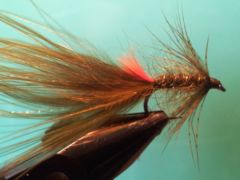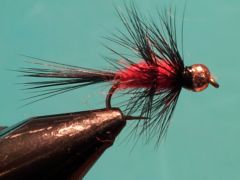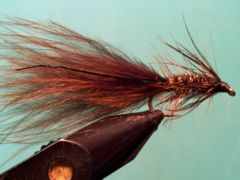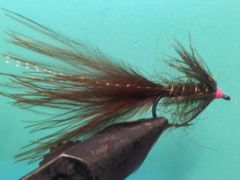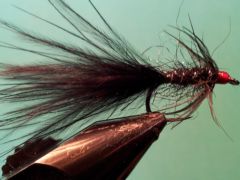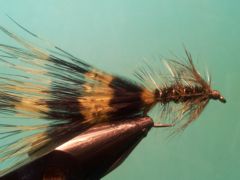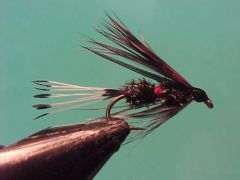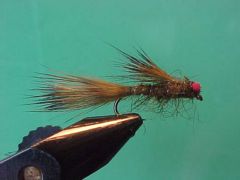Mark II woolly bugger – alternate tie
The MK 2 woolly buggers evolved from standard black and olive woolly buggers as a fly that would imitate an American frog that had bright red between its hind legs and consequently the red tag is traditionally tied in below the tail. This tie is a little more popular than the original tie these days and is main point of difference is that the tag tied in on top.

